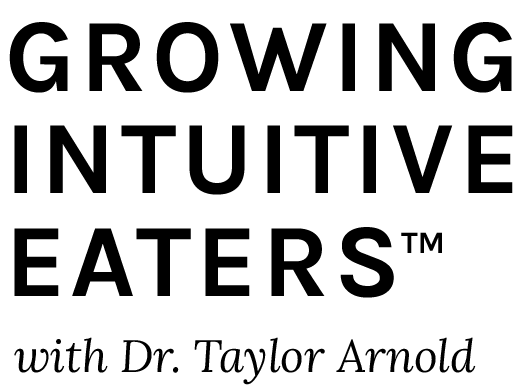The Clean Plate Club
Asking your kid to finish their plate before they get up from the table. The “clean plate club.” However you want to phrase it, this is pressure to eat. And (science TLDR;), pressure to eat has negative consequences on a child’s eating behaviors including eating less vegetables, liking the food less, increasing picky eating behaviors, emotional eating, and eating less in general (1-5).
What’s wrong with the clean plate club?
The clean plate club is a form of pressure to eat, which is associated with more picky eating and liking that food less. So while the clean plate club may result in a few more bites consumed, the long term consequences of using this strategy regularly is not great. Usually, when a parent or grandparent uses this strategy, they want their kid to eat more vegetables. But using this approach may make kids like these foods LESS, and eat less of them (1-2).
When we make a rule like the clean plate club, finishing your plate before you get down from the table, or even “take 3 bites of each food”, we are encouraging our kids to listen to external, rather than internal, cues to eat. In using this strategy, we are telling our kids that fullness is not marked by the physical sensation of a belly full of food, but rather an empty plate. So, rather than a child who stops eating when they are full, a child with the “clean plate club” rule may eat past the point of fullness OR eat the portion size that someone else thinks they should eat, rather than eat a portion size that matches their hunger and needs in that moment.
This strategy also invites mealtime power struggles, which don’t end well for anyone.
What about food waste?
I think there are a few ways to reduce food waste WITHOUT being members of the clean plate club.
- Put less on the plate. I am a huge fan of serving family style meals. Try putting a small amount of each food on your child’s plate, and allow them to add more to the plate from a central dish. Less food on the plate at the beginning of the meal can prevent a battle of food waste vs. clean plate club. At family gatherings, I ALWAYS plate my kids’ food (not a family member). This prevents well-intentioned family members from overloading their plate.
- Use play and fun to help kids explore new foods. BUT do not use this strategy to push your kids past the point of fullness.
- Save the foods for leftovers! I love serving a “leftover lunch” on Saturday and putting out a big platter of snacks, fruits, veggies, and leftovers. A great way to minimize food waste as a family!
What can we do instead?
Instead of joining the clean plate club, here are a few things to try instead.
- Start small. Like I mentioned above, put small portions on your child’s plate and allow them to ask for more (or serve themselves). Not only does this reduce food waste, but it also reduces overwhelm. Big portions on the plate can feel overwhelming to a child. Whereas smaller portions make feel more approachable, especially if the food is an unfamiliar food.
- Use play. Playing with your kids (crunching contest?!) and engaging with your kids over food is a great way to encourage them to explore the meal in front of them. If you are looking for more details on this, check out my Variety 101 course.
- Encourage them to listen to their body. Allow your child to stop eating when they are full, even if their plate is not clear. In doing so, you are helping them stay in-touch with their hunger and fullness cues, rather than relying on an arbitrary, external measure (the amount of food that someone else put on their plate).
- Stop the food comments. The food comments that I ALWAYS intervene on fit into two categories: (1) body comments, and (2) pressure/forcing to eat comments. And the “clean plate club” comments fall into this second category. Even if a family member is well-intentioned, I always step in and kindly let them know that my child doesn’t need to finish their plate if they don’t want to.
To summarize
While often well-intentioned, the “clean plate club” pressures kids to listen to external cues to decide when to stop eating, rather than listening to their internal body cues. NOT using the “clean plate club” strategy is one way we can support our kids in becoming intuitive eaters who CHOOSE to explore new foods.
Sending love and feeding wins your way!
❤️ Dr. Taylor

Check out this relevant research below:
- Galloway AT, Fiorito LM, Francis LA, Birch LL. ‘Finish your soup’: counterproductive effects of
pressuring children to eat on intake and affect. Appetite. 2006 May;46(3):318-23. doi:
10.1016/j.appet.2006.01.019. Epub 2006 Apr 19. PMID: 16626838; PMCID: PMC2604806. - Galindo L, Power TG, Beck AD, Fisher JO, O’Connor TM, Hughes SO. Predicting preschool
children’s eating in the absence of hunger from maternal pressure to eat: A longitudinal study
of low-income, Latina mothers. Appetite. 2018 Jan 1;120:281-286. doi:
10.1016/j.appet.2017.09.007. Epub 2017 Sep 9. PMID: 28899652; PMCID: PMC5680110. - Jansen PW, de Barse LM, Jaddoe VWV, Verhulst FC, Franco OH, Tiemeier H. Bi-directional
associations between child fussy eating and parents’ pressure to eat: Who influences whom?
Physiol Behav. 2017 Jul 1;176:101-106. doi: 10.1016/j.physbeh.2017.02.015. Epub 2017 Feb - PMID: 28215424; PMCID: PMC5436628.
- Houldcroft L, Farrow C, Haycraft E. Perceptions of parental pressure to eat and eating
behaviours in preadolescents: the mediating role of anxiety. Appetite. 2014 Sep;80:61-9. doi:
10.1016/j.appet.2014.05.002. Epub 2014 May 6. PMID: 24816324. - Ellis JM, Galloway AT, Webb RM, Martz DM, Farrow CV. Recollections of pressure to eat
during childhood, but not picky eating, predict young adult eating behavior. Appetite. 2016 Feb
1;97:58-63. doi: 10.1016/j.appet.2015.11.020. Epub 2015 Nov 22. PMID: 26593103.
